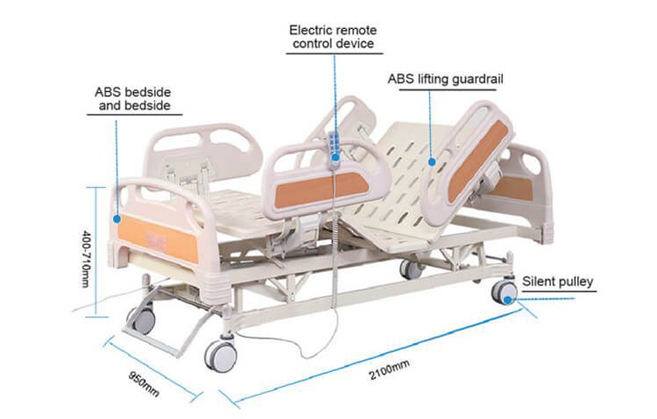The Difference Between Hospital Beds And Nursing Home Beds
For many years, people have confused hospital beds with nursing home beds or long-term care beds. Many industries use different terms to describe the types of medical beds they use in their facilities, and it is important for consumers to understand the difference between these terms to find the correct healthcare bed they are looking for. The following are some of the main differences between hospital beds and nursing home beds.
Hospital beds
Hospital beds are customized beds designed to meet the needs of the hospital environment. There are many differences between hospital beds and ordinary beds.
The most notable feature of the hospital bed is that it is fully adjustable, including the top and bottom of the bed. Hospital beds can usually be adjusted in various ways to support the patient's back, making the operation easier while the patient is still in the bed. A basic hospital bed can be divided into two parts, which can be raised in different ways at the same time.
Hospital beds usually also have railings, which help prevent patients from falling off the bed. The rail can be adjusted up and down for moving patients in and out of the bed and performing operations.
Another customization feature of hospital beds in the control panel on the headboard, where the staff can adjust the beds. The patient can call a nurse or control other equipment in the room, such as a TV. There is usually room at the foot of the bed to store the patient’s medical records.
Thanks to the built-in control panel and other adjustable functions, almost all hospital beds are electric.
Nursing home beds/long-term care beds
Nursing home beds and long-term care beds are similar to hospital beds in some respects, but there are also key differences. These beds are usually used in nursing homes, long-term care facilities, assisted living facilities, rehabilitation facilities, and can also be used at home.
Nursing home beds come in various sizes, including large beds for weight-loss patients. The difference in bed size helps medical institutions find a specific size suitable for patients and medical institutions. Hospital beds are generally of uniform standard size unless specially ordered. This standard-size hospital bed restricts the movement and position of the hospital bed.
Another key feature of long-term care and assisted living beds is the high/low characteristics of many beds. This allows the bed to move from a low position a few inches above the ground to a much higher position, making the patient and staff feel relaxed. This kind of bed is very effective for patients with Alzheimer's disease and dementia. There are multiple high and low beds, which can be raised and lowered according to different heights to meet the needs of each patient and facility.

hospital beds
Another difference between hospital beds and nursing home beds is that not all nursing home beds are automatically equipped with handrails. Different types of guide rails can be purchased to add to the bed. There are many other accessories you can buy for nursing home beds, such as soft-touch railings, bedspreads, mobile phones, mattresses, security locks, and wall bumpers. These bed accessories help customize each bed to meet the needs of residents.
These differences may seem small, but they can help facilities and customers determine which type of healthcare bed they are looking for.
We are Hospital Bed Suppliers. Please feel free to contact us if you are interested in our products.






